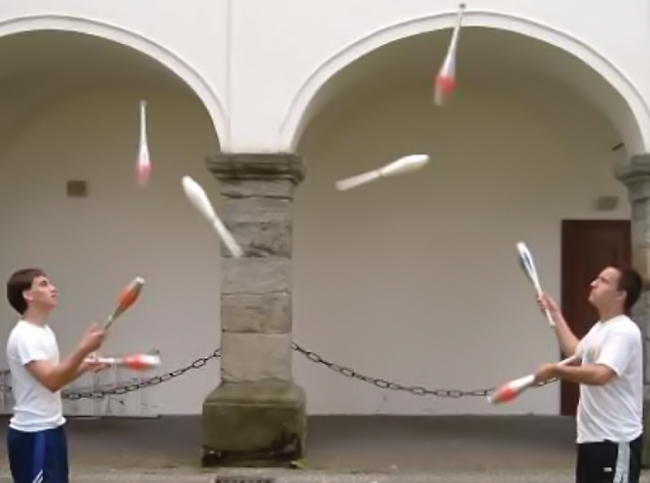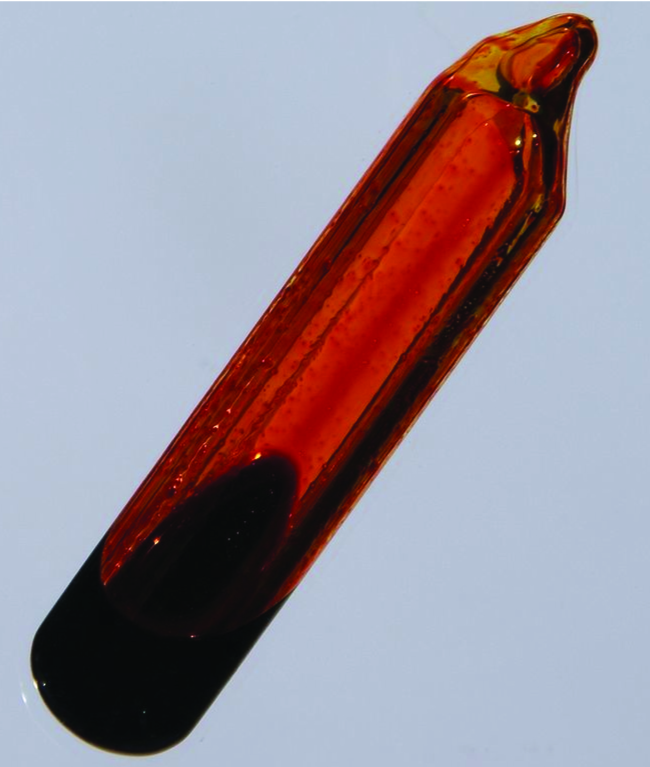76 Chemical Equilibria
[latexpage]
Learning Objectives
By the end of this section, you will be able to:
- Describe the nature of equilibrium systems
- Explain the dynamic nature of a chemical equilibrium
The convention for writing chemical equations involves placing reactant formulas on the left side of a reaction arrow and product formulas on the right side. By this convention, and the definitions of “reactant” and “product,” a chemical equation represents the reaction in question as proceeding from left to right. Reversible reactions, however, may proceed in both forward (left to right) and reverse (right to left) directions. When the rates of the forward and reverse reactions are equal, the concentrations of the reactant and product species remain constant over time and the system is at equilibrium. The relative concentrations of reactants and products in equilibrium systems vary greatly; some systems contain mostly products at equilibrium, some contain mostly reactants, and some contain appreciable amounts of both.
(Figure) illustrates fundamental equilibrium concepts using the reversible decomposition of colorless dinitrogen tetroxide to yield brown nitrogen dioxide, an elementary reaction described by the equation:
Note that a special double arrow is used to emphasize the reversible nature of the reaction.
![A three-part diagram is shown and labeled, “a,” “b,” and “c.” In part a, at the top of the diagram, three beakers are shown, and each one contains a sealed tube. The tube in the left beaker is labeled “t equals 0.” It is full of a colorless gas which is connected to a zoom-in view of the particles in the tube by a downward-facing arrow. This particle view shows seven particles, each composed of two connected blue spheres. Each blue sphere is connected to two red spheres. This type of particle is labeled “N subscript 2 O subscript 4.” The tube in the middle beaker is labeled “pre-equilibrium.” It is full of a light brown gas which is connected to a zoom-in view of the particles in the tube by a downward-facing arrow. This particle view shows nine particles, five of which are composed of two connected blue spheres. Each blue sphere is connected to two red spheres. This type of particle is labeled “N subscript 2 O subscript 4.” The remaining four are composed of two red spheres connected to a blue sphere. This type of particle is labeled “N O subscript 2.” The tube in the right beaker is labeled “at equilibrium.” It is full of a brown gas which is connected to a zoom-in view of the particles in the tube by a downward-facing arrow. This particle view shows eleven particles, three of which are composed of two connected blue spheres. Each blue sphere is connected to two red spheres. The remaining eight are composed of two red spheres connected to a blue sphere. In part b, in the middle of the image, is one graph. This graph has a y-axis labeled, “Concentration,” and an x-axis labeled, “Time.” A red line labeled, “N O subscript 2,” begins in the bottom left corner of the graph at a point labeled, “0,” and rises near the highest point on the y-axis before it levels off and becomes horizontal. A blue line labeled, “N subscript 2 O subscript 4,” begins near the highest point on the y-axis and drops below the midpoint of the y-axis before leveling off. In part c, at the bottom of the image is another graph. This graph has a y-axis labeled, “Rate,” and an x-axis labeled, “Time.” A red line labeled, “k subscript f, [ N subscript 2 O subscript 4 ],” begins in the bottom left corner of the graph at a point labeled, “0,” and rises near the middle of the y-axis before it levels off and becomes horizontal. A blue line labeled, “k subscript f, [ N O subscript 2 ] superscript 2,” begins near the highest point on the y-axis and drops to the same point on the y-axis as the red line before leveling off. The point where both lines become horizontal is labeled, “Equilibrium achieved.”](https://pressbooks.nscc.ca/app/uploads/sites/58/2019/07/CNX_Chem_13_01_equilibrium.jpg)
For this elementary process, rate laws for the forward and reverse reactions may be derived directly from the reaction stoichiometry:
As the reaction begins (t = 0), the concentration of the N2O4 reactant is finite and that of the NO2 product is zero, so the forward reaction proceeds at a finite rate while the reverse reaction rate is zero. As time passes, N2O4 is consumed and its concentration falls, while NO2 is produced and its concentration increases ((Figure)b). The decreasing concentration of the reactant slows the forward reaction rate, and the increasing product concentration speeds the reverse reaction rate ((Figure)c). This process continues until the forward and reverse reaction rates become equal, at which time the reaction has reached equilibrium, as characterized by constant concentrations of its reactants and products (shaded areas of (Figure)b and (Figure)c). It’s important to emphasize that chemical equilibria are dynamic; a reaction at equilibrium has not “stopped,” but is proceeding in the forward and reverse directions at the same rate. This dynamic nature is essential to understanding equilibrium behavior as discussed in this and subsequent chapters of the text.

Physical changes, such as phase transitions, are also reversible and may establish equilibria. This concept was introduced in another chapter of this text through discussion of the vapor pressure of a condensed phase (liquid or solid). As one example, consider the vaporization of bromine:
When liquid bromine is added to an otherwise empty container and the container is sealed, the forward process depicted above (vaporization) will commence and continue at a roughly constant rate as long as the exposed surface area of the liquid and its temperature remain constant. As increasing amounts of gaseous bromine are produced, the rate of the reverse process (condensation) will increase until it equals the rate of vaporization and equilibrium is established. A photograph showing this phase transition equilibrium is provided in (Figure).

Key Concepts and Summary
A reversible reaction is at equilibrium when the forward and reverse processes occur at equal rates. Chemical equilibria are dynamic processes characterized by constant amounts of reactant and product species.
Chemistry End of Chapter Exercises
What does it mean to describe a reaction as “reversible”?
The reaction can proceed in both the forward and reverse directions.
When writing an equation, how is a reversible reaction distinguished from a nonreversible reaction?
If a reaction is reversible, when can it be said to have reached equilibrium?
When a system has reached equilibrium, no further changes in the reactant and product concentrations occur; the forward and reverse reactions continue to proceed, but at equal rates.
Is a system at equilibrium if the rate constants of the forward and reverse reactions are equal?
If the concentrations of products and reactants are equal, is the system at equilibrium?
Not necessarily. A system at equilibrium is characterized by constant reactant and product concentrations, but the values of the reactant and product concentrations themselves need not be equal.
Glossary
- equilibrium
- state of a reversible reaction in which the forward and reverse processes occur at equal rates
- reversible reaction
- chemical reaction that can proceed in both the forward and reverse directions under given conditions

